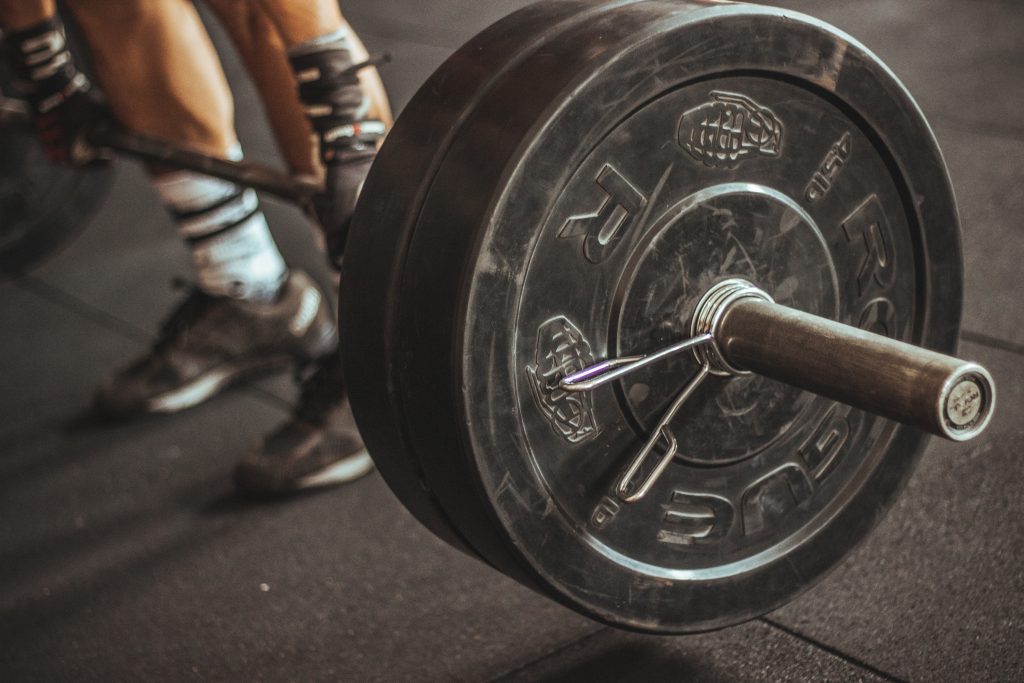Strength training is an excellent way to gradually increase muscle mass, burn calories, and reduce body fat.
The training plays a significant role in your overall fitness and health. So, it would help if you incorporated it into your workout routine.
People sometimes use modified exercises to complement their training. A barbell rack pull is one of them. This article will explore rack pulls and the benefits you get from performing them.
What Are Rack Pulls?
Rack pulls are variations of the deadlift. It is a popular exercise for bodybuilders where a loaded barbell is set up on a power rack. The rack is usually just above or below the knees. The weight is lifted by gripping the bar while extending the hips to full lockout.


Rack pulls are effective exercises for developing pulling strength, benefiting athletes and recreational gym-goers alike. They are also excellent for developing grip strength and improving posture. Additionally, this exercise is among the best pandemic sports to help you increase muscle gains.
What Muscle Do Rack Pulls Focus On?
Performing rack pulls allows you to focus on several muscle groups at once, making it an excellent compound exercise.
The major muscle groups targeted by the rack pull are:
Glutes
While the rack pull has a reduced range of motion, it can still work on the gluteus maximus, minimus, and medius muscles. These are the muscles that are responsible for extending the hip joint. They play a crucial role in performing a deadlift properly and stabilizing the hip joint during the exercise.
Hamstrings
The hamstrings are among the muscles worked on by rack pulls. These muscles play a role in hip extension and knee flexion. They’re essential in the first half of the movement when lifting the barbell off the rack.
Erector spinae
The paraspinal muscles surround the spine and help extend the spine. These muscles are most active during the bottom half of the movement. To properly do rack pulls, it is crucial to keep good deadlift form by using a shoulder-width grip and keeping the back straight.
Trapezius
The trapezius muscle is a large, triangular muscle extending from the skull’s base to the lower back. The upper back muscles are responsible for holding the shoulders in alignment and maintaining a tall posture throughout the movement.
Latissimus dorsi
The lats are the largest back muscle. They help keep the back tight throughout the movement and protect your spine. It is a large, flat muscle located in the lower back region of the thorax. Its primary function is to move the upper extremity, but it also aids respiration.
Hand and forearm muscles
Performing a rack pull also helps the hand and forearm muscles. These small muscles strengthen grip strength when you lift heavier weights during an exercise.
Quadriceps
The quadriceps play a significant role in knee extensions. Even though a rack pull does not focus on these muscles, they help strengthen the legs when you perform lifts. This muscle group is located in the front of the thigh.
Are Rack Pulls Worth It?
The rack pull is among the most controversial movements in lifting. Despite the controversy, it is a good muscle strength training exercise. Adding rack pulls to your exercise regimen can give you several benefits, including:
Better Pulling Strength
You’re working on your pulling strength when you add rack pulls to your regimen. This is the force that you generate when you move something towards you, like when you’re pulling a heavy object off the ground.
Lower Injury Risk
A rack pull is a compound exercise that offers the same benefits as a traditional deadlift but reduces the risk of injury. This is because the starting position of the rack pull is a bit higher than a conventional deadlift allowing you to perform the lift with a more vertical posture and reducing lateral stress.
Enhanced Muscle Development
Training rack pulls will enhance muscle development in your posterior chain muscles. The exercise allows you to lift a heavier weight since it targets these back muscles more directly than other exercises.
Is Rack Pull Harder Than Deadlift?
Generally speaking, performing deadlifts is harder than performing rack pulls. Even though both exercises have similar movements, the deadlift has a greater range of motion.
Deadlifts start from the floor, while rack pulls have a rack where the weights start. So, you start at a more vertical position than a regular deadlift.
But the higher starting point doesn’t mean performing a rack pull is easy. They’re still a difficult exercise that works for many muscle groups.
The rack height offers benefits that make them worth doing, even if they’re not as hard as deadlifts. This is particularly important if you’re still looking for the best sport for you to focus on.
The barbell’s higher starting position makes the movement slightly easier. This deadlift variation allows you to overcome weak points in a traditional deadlift. The most common weak point the exercise overcomes is from just above the knee to lockout.
Overloading the lockout portion with the exercise can help you boost your body strength in other deadlift variations, including the sumo stance and trap bar deadlift.
Why Should You Perform Rack Pulls Instead of Deadlifts?
When performed correctly, a barbell exercise can improve your strength and size. But as you get better at an exercise, you’ll also want to focus on improving your technique to ensure that you’re using the right muscles and getting the most out of each rep. This is where rack pulls can come in handy, especially when you gradually add more weight plates you’ll use.
As you add more weight to your exercise regimen, you should also consider working with a personal trainer. Rack pulls are an excellent exercise for teaching proper pull patterns and developing explosive strength.


